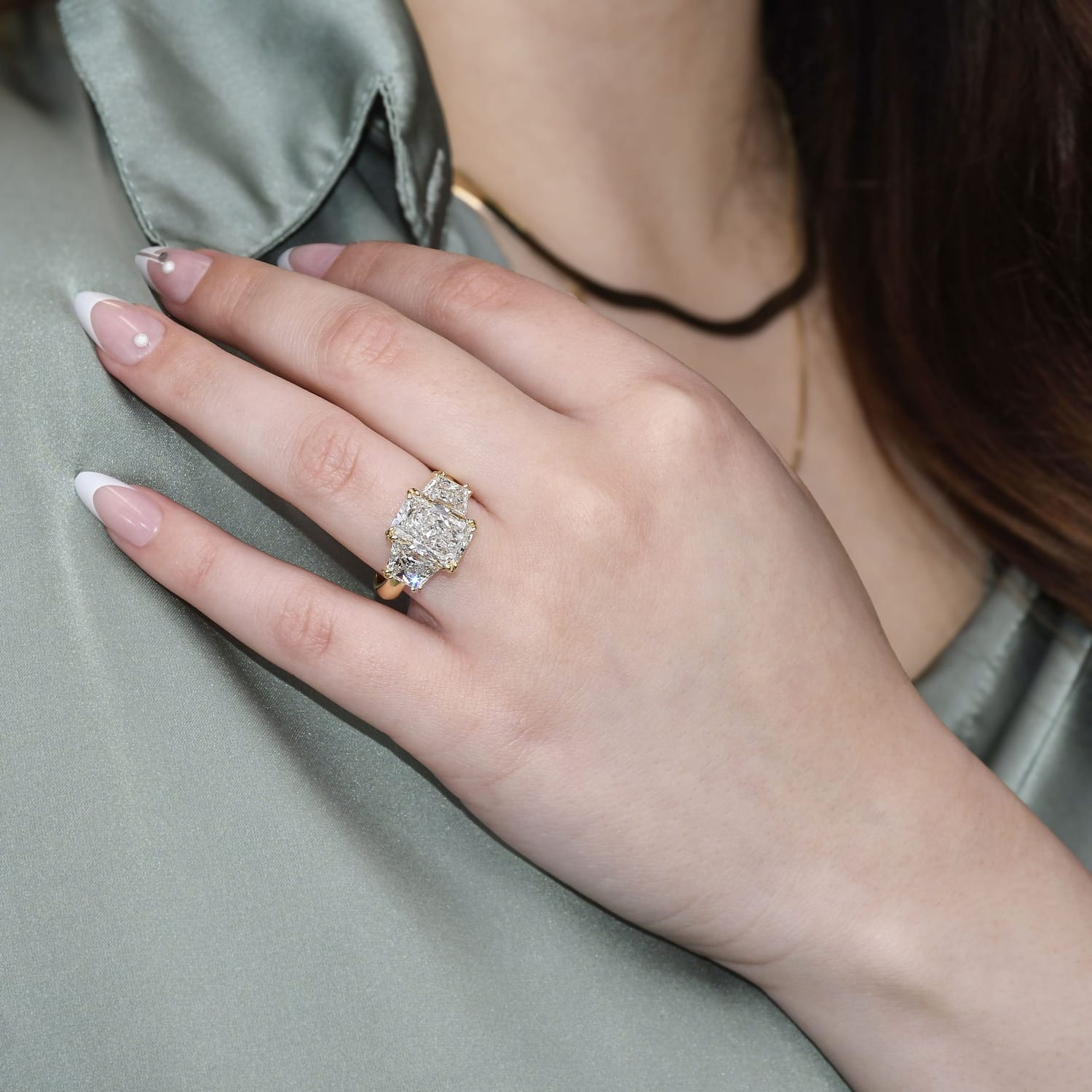Gemstone Education: Sapphires - Introduction
Introduction to Sapphires

Sapphires, a cornerstone of the corundum family, are cherished not just for their iconic blue hues but also for a vibrant spectrum of fancy colors. From the deep, velvety blue of Kashmir sapphires to the rare pinkish-orange of padparadscha, sapphires captivate with their broad color range.
The Essence of Sapphires
Sapphire is fundamentally corundum, similar to ruby but distinguished by its colors other than red. The presence of trace elements such as iron and titanium gives rise to the classic blue sapphire, while other elements create an entire rainbow of colors, from green to violet and beyond.

Sapphire Colors and Varieties
 |
|
 |
|
 |
|
 |
|
 |
|
 |
|
*images courtesy of Gem 2000. Used with permission.
Geological Formation and Sources

Sapphires form under silicon-free conditions, primarily from aluminum and oxygen, and are most commonly found in metamorphic and igneous rocks. Notable sources include Madagascar, Sri Lanka, Myanmar, and Australia, with each region contributing uniquely to the global supply of sapphires.
Historical Significance and Lore

Sapphires have been associated with royalty and romance for centuries, underscored by the famous sapphire engagement ring given by Prince Charles to Lady Diana Spencer. Historically, sapphires symbolize nobility, truth, sincerity, and faithfulness. They were believed to protect their wearers from envy and harm in ancient Greece and Rome, and during the Middle Ages, the clergy wore sapphires to symbolize Heaven.
Sapphire Phenomena
- Asterism and Color Change: Some sapphires display phenomena such as asterism or color change, shifting hues under different lighting conditions due to specific inclusions and crystal orientations.
Cultural Significance and Symbolism
Today, sapphires are a popular choice for engagement rings and other fine jewelry, celebrated for their durability and the breadth of colors available. Their timeless appeal ensures they remain one of the most sought-after gemstones in the world, symbolizing wisdom, virtue, and good fortune.

Sapphire Quality Factors: What to Look For

- Color and Clarity: The value of a sapphire is highly dependent on its color, with the most prized sapphires displaying a vivid blue without any overtones. Clarity also plays a significant role, though sapphires with vivid blue color without any visible inclusions can be rare, they are more common than rubies of comparable quality.
- Cut and Carat Weight: The cut of a sapphire is essential to enhancing its color, brightness, and overall visual appeal. Carat weight, like with other gemstones, significantly impacts the value, with larger sapphires typically being much rarer and more valuable.
Sapphire Treatments: Enhancing Beauty and Color
Sapphires, members of the corundum family, undergo treatments to enhance their color and clarity. Two common methods are lattice diffusion and heat treatment, each with specific effects on the appearance and properties of these gemstones.
Lattice Diffusion
- Objective: Lattice diffusion is a treatment process where certain elements are introduced into the atomic lattice of a gemstone during heat treatment to change or enhance its color.
- Process and Elements: Initially, experiments in the 1980s focused on diffusing titanium and chromium (natural coloring agents in corundum) but met with limited success in fully penetrating the stones. A breakthrough occurred in 2003 with the introduction of beryllium diffusion. Beryllium atoms, being smaller than titanium or chromium, can penetrate the entire depth of the gemstone, even in large sapphires, effectively altering their color throughout.
- Impact on Sapphires: Beryllium diffusion is capable of enhancing the color of sapphires, intensifying existing colors or inducing new ones.
Heat Treatment
- Purpose: Heat treatment is employed to alter the color and clarity of corundum gemstones.
- Effects on Sapphires: Heating sapphires can intensify or induce blue coloration. It also removes silk inclusions, enhancing the gemstone’s clarity and transparency. Like rubies, the recrystallization of silk can improve asterism in sapphires.
Considerations and Care
- Durability and Stability: While these treatments can significantly enhance the gemstone's aesthetic qualities, they may affect its durability and require specific care, particularly avoiding environments that could reverse the treatment effects, such as extreme heat or certain chemicals.
- Impact on Value: Sapphires that have undergone heat treatment or lattice diffusion are valued differently that untreated sapphires. Within the industry, heat treatment for sapphires is ubiquitous and considered to be standard. On the other hand, lattice diffusion is like heat treatment with additional color-enhancing properties, and is not considered standard. Because of this, sapphires that have undergone heat treatment only are substantially more valuable than comparable looking sapphires that have undergone lattice diffusion. Furthermore, sapphires that are treatment free (often referred to in the trade as “No Heat”) are rare and can be highly valuable.
- Disclosure: Due to the meaningful impact on value, it is crucial for sellers to disclose these treatments to buyers. Furthermore, they can affect the gemstone's care requirements.





